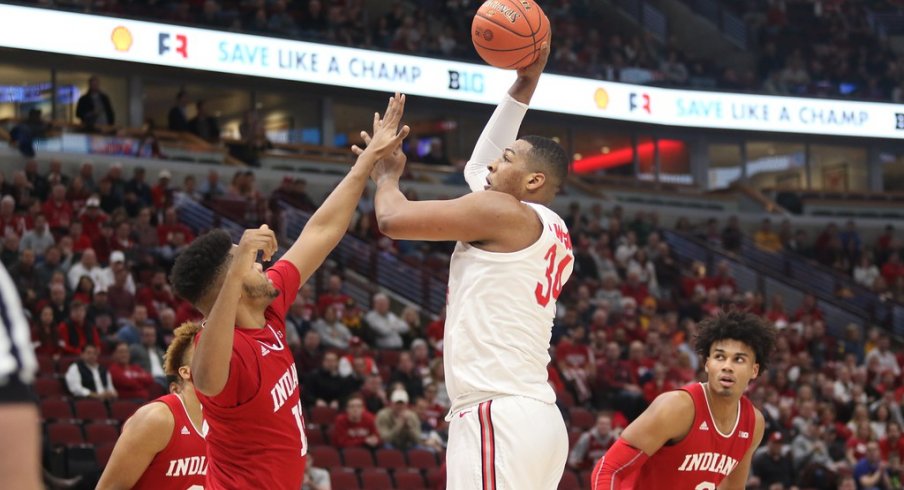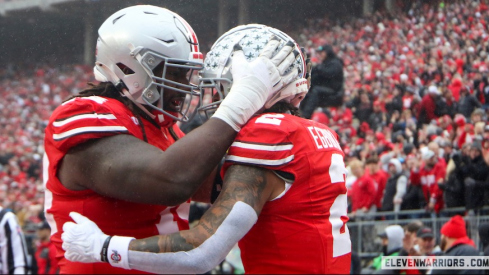It was the best of times, it was the worst of times.
It was a 12-1 start to a five-game losing streak and game winners to blowout losses. The pendulum swung from success to failure and back to success, never failing to find a new source of energy or origin of demise.
The unpredictability of the 2018-2019 Buckeyes became more exhausting than exciting. The final moments against Indiana were opposed by a loss to Rutgers. The exciting, albeit rare, transition play was countered with stalling offenses and consecutive turnovers.
More specifically, no one knew exactly what was going to happen when Kaleb Wesson came off the court. His constant foul trouble forced him to play just 25.9 minutes per game, fifth-most on the team. When he was on the court, however, he was clearly the Buckeyes' best player.
His impact is most clearly illustrated by his net efficiency numbers. Net efficiency measures how many points the lineup on the floor scores, how much the opponent scores, and the difference between the two. This number is then adjusted to 100 possessions.
When Wesson was on the floor, the Buckeyes outscored opponents by an average of 13.6 points per 100 possessions, by far the best mark on the team. When he sat, Ohio State was outscored by almost nine points per 100 possessions.
By subtracting his on-court efficiency and off-court efficiency, we can see how many points he "adds" to the team. In Wesson's case, he "adds" 22.52 points per 100 possessions, an unheard-of amount.
The rest of the squad pales in comparison.
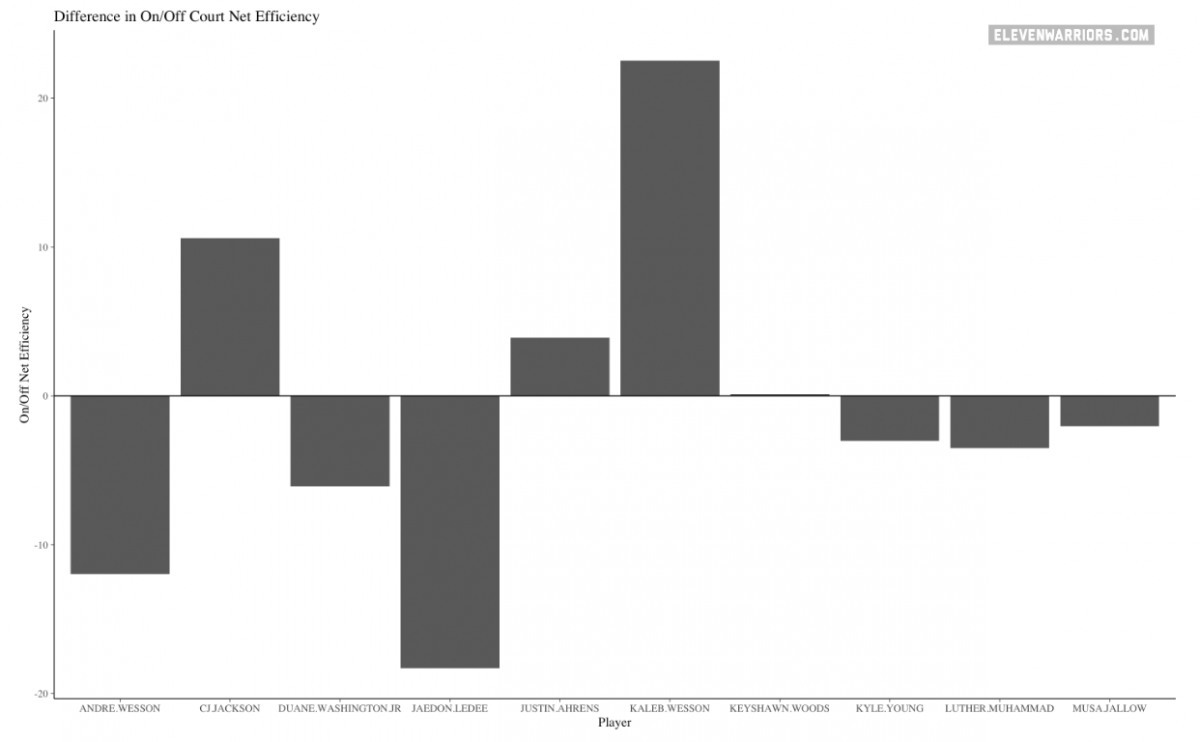
Looking at how many points a player adds via on/off ratings can be helpful, but in this case, it does not tell us much. Everyone knows that Kaleb Wesson is the best player on the team.
Instead, let's look at scoring droughts. Yes, the dreaded pop-up box in the corner of the TV that states how long it has been since the scarlet-and-gray scored can now be used to help judge a player's offensive output.
As was clear to anyone watching them last year, the Bucks seemed to have a scoring drought every half because, well, they did.

To summarize, the Buckeyes had 174 two-minute scoring droughts (tied for third-most in the Big Ten), 73 three-minute scoring droughts (most in the Big Ten), and 24 four-minute scoring droughts (tied for the most in the Big Ten). At this point, it feels like a miracle that this team won an NCAA Tournament game.
The player impact of these droughts can be calculated by finding the players on the court during the drought and dividing that by how much they are on the court. In this way, we have a rate for which each player contributes to a scoring drought.
Unsurprisingly, defense-first players contribute the most to scoring droughts.
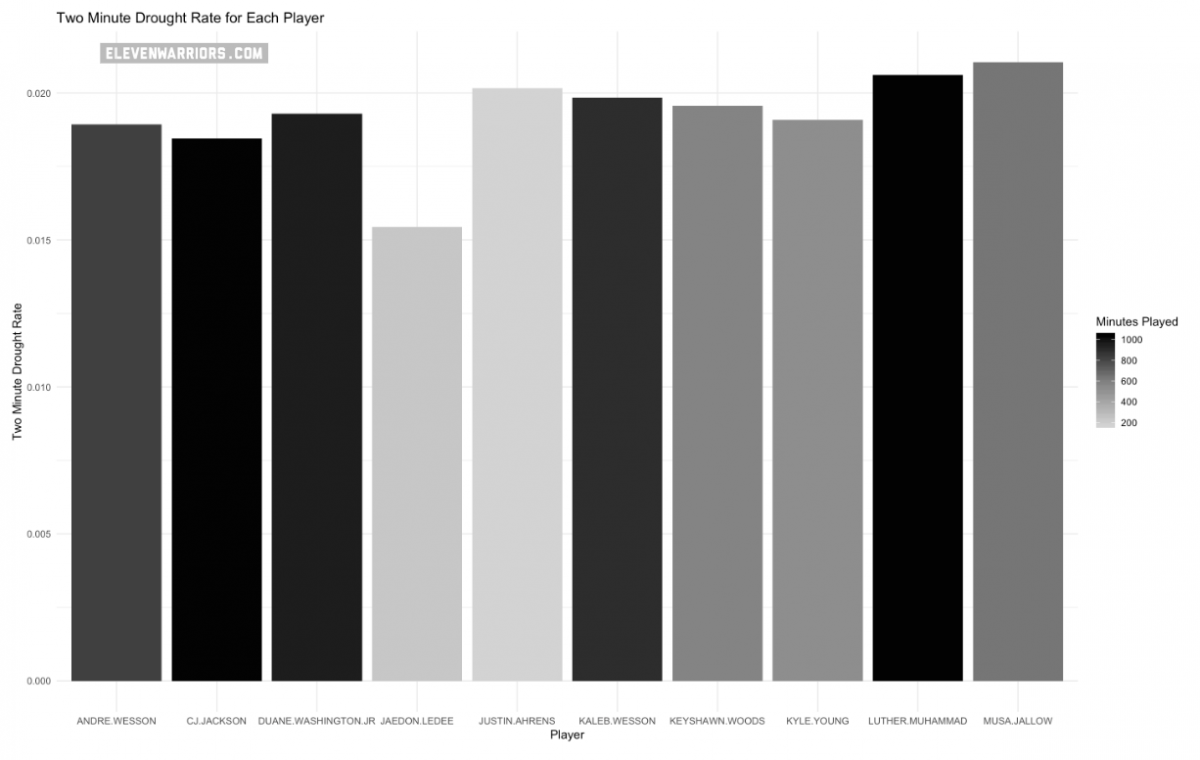
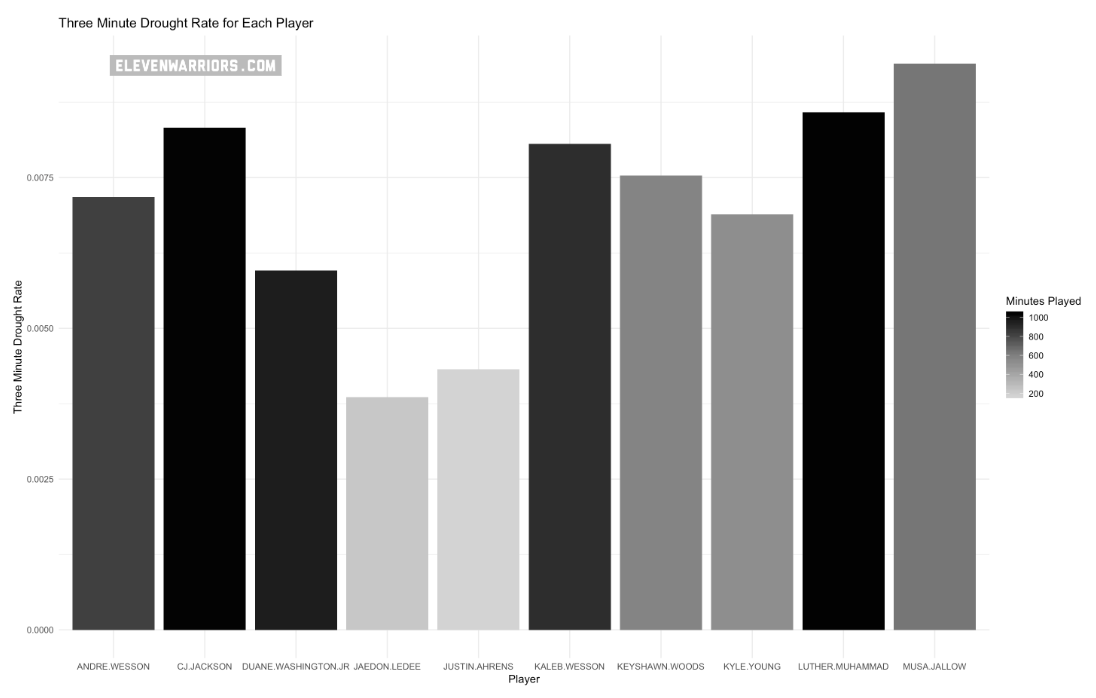
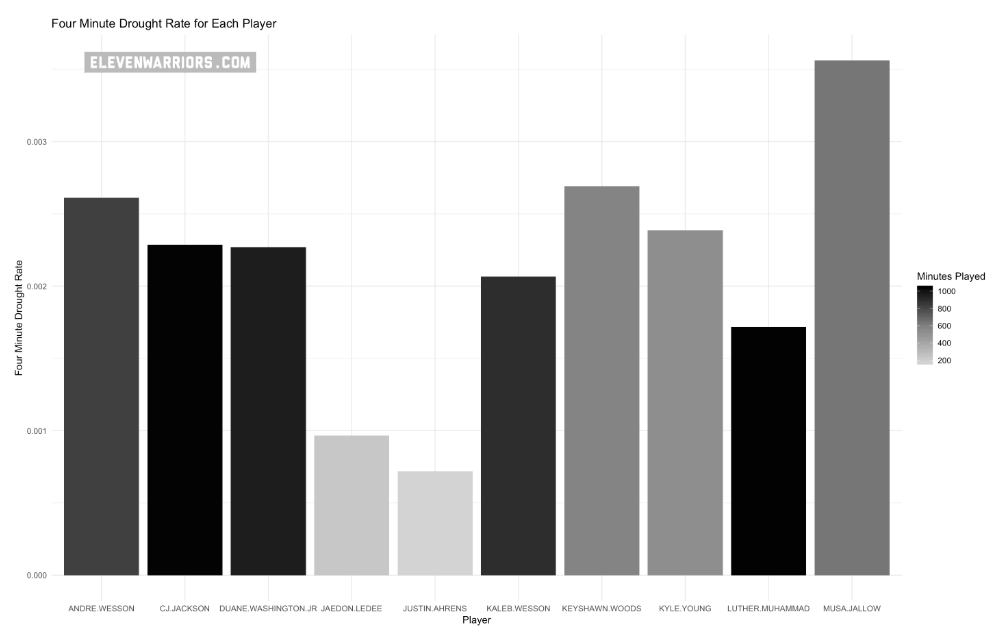
Kaleb Wesson, despite his high on/off rating, is about average in terms of his contributions to scoring droughts. Justin Ahrens, on the other hand, is as good as any offensive player on the team while Musa Jallow tends to be a nonfactor on that end.
After analyzing the net efficiency ratings and scoring drought rates, some discrepancies have appeared. For one, Ahrens had higher on/off ratings and, for the most part, lower drought rates than Andre Wesson, Luther Muhammad, and Duane Washington yet played significantly fewer minutes. Also, C.J. Jackson, despite his relatively high drought rates, had one of the best on/off ratings.
These questions both circle back to the same thing: Kaleb Wesson. Wesson's foul trouble often forced Holtmann, whose squad was already undersized, to put in defense-first players in order to limit the impact of opposing scorers. He then relied on Jackson to push the offense, even when it was not performing well. For these reasons, Ahrens, who has a long way to go on the defensive end, struggled to get on the floor despite his high on/off rating and instant-offense capability.
Wesson's impact on the floor can not be understated; his presence in the paint opens things up for the rest of the offense and he is a solid one-on-one defender. Indirectly, however, his ability to avoid fouls must improve and will be important this coming season as Ohio State gears up for an electrifying season.
